|
THOMAS HART - BENEDICT ARNOLD
|
Colonel
Arnold commanding
the Provincial
Troops |

Thomas Hart, Public domain, via Wikimedia Commons
From the Anne S. K. Brown Collection at Brown University.
March 26, 1776 |
- This is a color mezzotint engraving of a three-quarter
length portrait of American Revolutionary War General Benedict Arnold.
- Because it's an engraving, the plate can be used to
reproduce additional copies, which there are many.
- Created to commemorate Arnold's part in the American Invasion of Quebec (September 1775 to June 1776), by Thomas Hart, 26 March 1776.

Benedict Arnold |
-
Benedict Arnold (1741-1801) was an American-born British military officer who served during the American Revolutionary War.
- He was born in Norwich, Connecticut Colony, British America,
to Benedict Arnold III (1683–1761) and Hannah Waterman King, on January 14, 1741.
- Arnold was the fourth member of his family named after his
great-grandfather Benedict Arnold I, an early governor of the
Colony of Rhode Island.

Quebec |
- This is the earliest Benedict Arnold portrait of Arnold with his right hand outstretched and Quebec in the background.
- It is captioned as follows: 'Colonel Arnold who
commanded the Provincial Troops sent against Quebec, through
the wilderness of Canada and was wounded in that city, under
General Montgomery.'
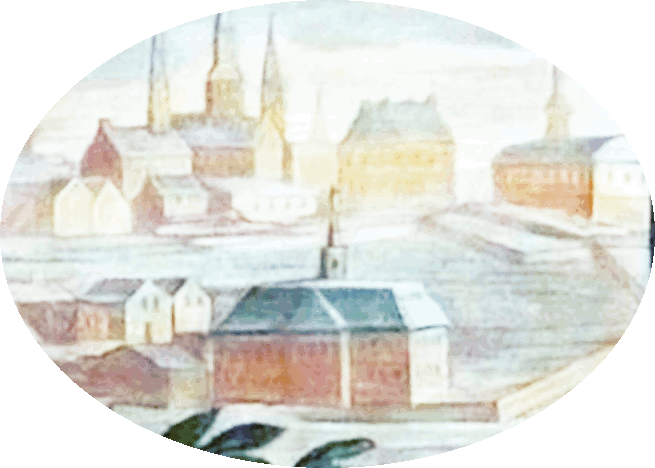
Masonic lodge |
- In 1767, Arnold married Margaret Mansfield, daughter of Samuel Mansfield, the sheriff of New Haven and a fellow member in the local Masonic lodge.
- Arnold was a Freemason and member of Hiram Lodge No. 1 in
New Haven which he joined in 1765, although he was later
expelled after his treasonous actions.
- Arnold’s lone military experience before 1775 was 3 weeks of militia duty in 1757 when French and Indian forces captured and destroyed Fort William Henry at the southern end of Lake George.
- The Norwich militia unit he joined returned home when the French force withdrew north rather than invading New England.
- Arnold fought with distinction for the American Continental Army
beginning in 1775 and rose to the rank of major general before defecting to the British in 1780.
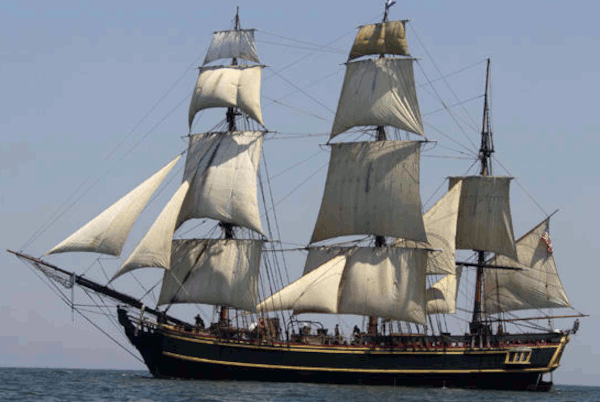
18th-century
merchant ship |
- After operating a successful drugstore and general store for several
years in New Haven, Arnold invested in a merchant trade
business.
- By his mid-20s, he had purchased three sailing sloops and started a thriving business as a sea trader in Canada and the Caribbean.

British tax
collector |
- Arnold spent much of his time at sea on trading voyage,
however, after the conclusion of the French and Indian War,
the British government needed money and decided to tax the American colonies
to supplement their income.
- Arnold’s profits dried up with the introduction of the Sugar and Stamp Acts in the 1760s, but like many colonial businessmen, he flouted the laws and took to smuggling untaxed rum and molasses.

Spacious mansion |
- In spite of the economic threat of British taxation, Arnold built a spacious mansion for himself and his family in New Haven: he was easily the richest man in the town at the time.
- He got involved in the local Sons of Liberty as part of the effort to protest the taxes from being imposed on Connecticut colony
and they spent their time inciting riots against Britain.
- Arnold had a distinquished history during the early
years of the war.
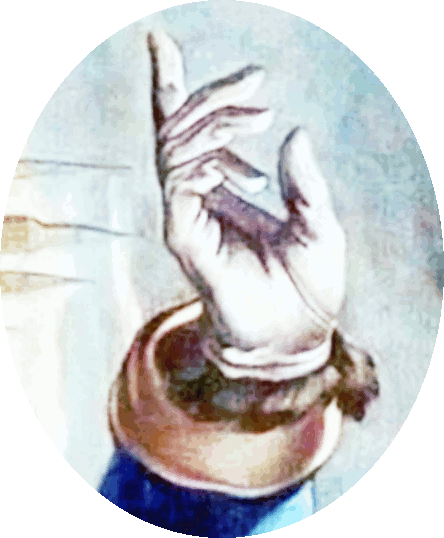
Organized |
-
By 1774, Arnold could smell a civil war brewing within the British empire.
- An enthusiastic advocate of defending American rights, he organized some
65 New Havenites, including a few Yale College students, into what the Connecticut government recognized as the Governor’s 2nd Company of Footguards.
- In March of 1775 he was elected captain
of the new militia.
- His first wife Margaret died in 1775 and he was left a
widower with 3 sons.

Powderhouse Day |
- In April 1775, only two days after the battles of Lexington and Concord in Massachusetts, the New Haven militia assembled
in the town square.
- The Footguards had uniforms, paid for by their captain, but they lacked muskets, power, and ball,
however, these martial necessities were available in New Haven’s powder magazine.
- Captain Arnold marched them to a local tavern to ask the leaders of the town for the keys to the powderhouse
because they needed ammunition.

Keys required |
- Although the regiment wore red uniforms, they were
marching
to Boston to support the Patriots, but the town leaders were hesitant to hand Arnold the keys.
- The cautious town fathers, fearing the spread of a shooting rebellion, refused them entrance,
and Arnold gave them a few minutes to rethink matters.
- "Regular orders be damned! Our friends and neighbors are being mowed down by redcoats. Give us the powder or we will take it.”
|
Arnold threatened to order his men to tear down the powderhouse if they weren’t given the keys at once, shouting, “None but Almighty God shall prevent my marching!” The incident is celebrated to this day in New Haven as Powderhouse Day. (founderoftheday.com)
|
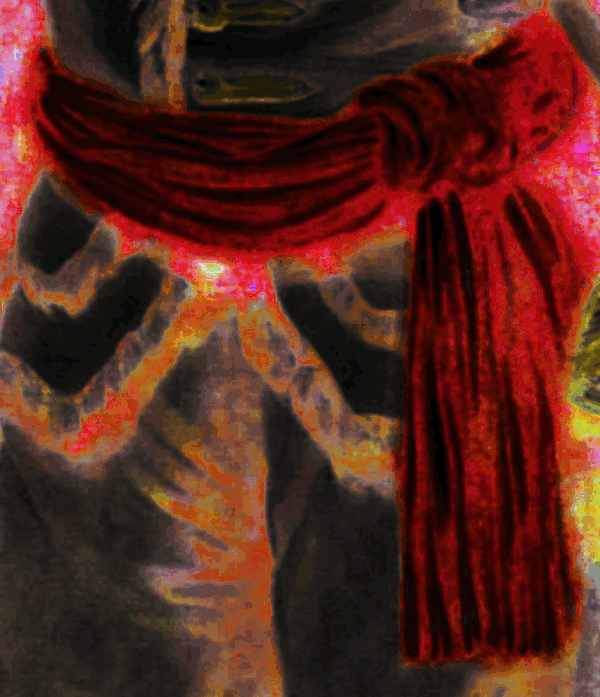
War mongers |
- But really, if you think about it, who wants a bunch of
ruffians shooting up their town?
- Especially when you
start figuring out they work for both sides and now we are
discovering that seems to be the case in all our 'wars.'
- It's not
us that starts them, it's always the corrupt government, only
nowadays we can't even pretend it's anything about freedom or
liberty.
- Just think what it was like when they were
shooting the 'mafia' in local restaurants, or shooting up the
local bar during their illegal prohibition, and college
campuses like Kent State.

Boston |
- Within a few days, the well-armed Footguards arrived in Cambridge, Massachusetts, where thousands of New Englanders were gathering to pin down General Thomas Gage and his redcoats in Boston.
-
In mid-June 1775, Arnold sent a letter to the Continental Congress in which he advocated the movement of a large patriot force into Canada to seize and secure Quebec Province as the
14th colony.
- He worried that the British planned to send
troops south to Boston and cut off the east coast.
|
Having sailed his own trading vessels into such Canadian ports as Quebec and Montreal, he understood the terrain. He could envision what would become British strategy in 1776: to surround New England and cut off the head of the rebellion. The British, as they would do, deployed masses of troops to New York City and Quebec Province in an effort to take control of the Lake Champlain/Hudson River corridor. (founderoftheday.com)
|
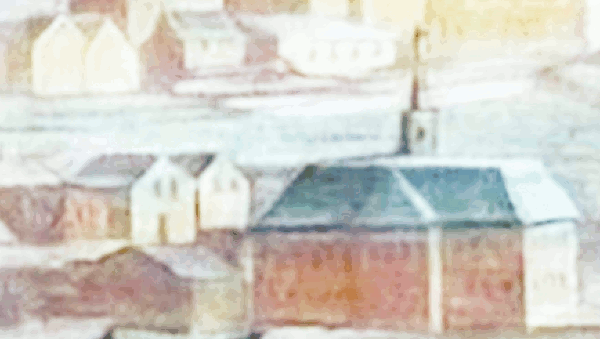
Headquarters |
- When this made its way to George Washington he was
impressed with Arnold's strategic plans.
- Arnold met with such local rebel leaders as Dr. Joseph Warren and spoke of the need to capture the valuable cache of artillery pieces at Fort Ticonderoga and Crown Point on Lake Champlain.

Ticonderoga where
the waters meet |
-
His forces captured Fort Ticonderoga
in 1775 which began when Arnold took his men to Boston to join the Patriots besieging the city.
- It was there that Arnold received a Colonel’s commission from the Massachusetts government
that was recommended by George Washington to lead a patriot
force into Canada.
- Arnold set out for Fort Ticonderoga
(Fort Ti) to head an expedition to seize the cannons there on behalf of the revolutionaries.
- The fort was described as 'lightly defended' and in
ruinous condition.
|
"Ticonderoga" is an Iroquois word meaning "it is at the junction of two waterways" or "between two waters". This name refers to the strategic location in New York where Lake George and Lake Champlain connect via the LaChute River, which was historically a crucial portage route. The name is also associated with the historical Fort Ticonderoga located at this site and the well-known brand of pencils. (Assistant)
|
- Ethan Allen and the Green Mountain Boys, operating under apparent authority from Connecticut, were already in position to take Fort Ticonderoga when Arnold caught up with them on the east bank of Lake Champlain.
- Arnold knew about Allen’s plan to
capture the same post, but when he got to the Green Mountains in present-day Vermont he made a compromise with Allen to lead the expedition jointly.
- Allen arrived without any troops? and showed Allen his
army commission but was laughed at because Allen's troops
weren't about to follow him.

British fortress |
- The American Revolution was only 3 weeks old when Ethan
Allen (1738-1789) and Benedict Arnold led a small force of
volunteers in an attack on one of the mightiest British
fortresses in North America,
- Under the cover of darkness,
at
4 in the morning on May 10, 1775, Arnold and Allen and their troops entered Fort Ticonderoga and took it without a shot.
|
Located on Lake Champlain the fort had played a strategic role in the previous French and Indian Wars. Although it was located far from Boston, the focal point of the war in Spring, 1775, the Patriots realized that Ticonderoga's cannon would be a valuable prize for the American forces. (The Apprentice Chronicles)
|

Ethan Allen
(overpriced
furniture)
Or is
it Geo Washington? |
-
Once inside, the Boys rejoiced when they discovered 90 gallons of rum.
-
The British commander had no sooner surrendered, than Allen and his Green Mountain Boys hit the liquor, started looting
the fort, and let in more ruffians to join their party.
- What’s worse, Ethan Allen gave a glowing report of the
fort’s capture to the Colonial authorities that omitted Arnold
entirely!
- Ethan Allen took all the credit for capturing Ticonderoga, which had also been Benedict Arnold’s plan
for which he received an army commission.
|
It was thanks to Allen and Arnold, however, that the following winter Henry Knox was able to haul Ticonderoga’s cannons to Boston and force the British to disband their occupation of that city. (The Apprentice Chronicles)
|
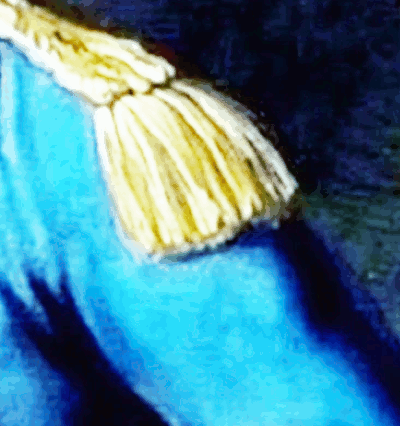
Seized the
initiative |
- Concerned about a possible British counter stroke coming out of Canada to retake the fort, Arnold seized the initiative.
- In mid-May he led a small force north down Lake Champlain and
25 miles into Canada where they struck the British stronghold of St. Johns, completely surprising a handful of defenders there.
- He and his raiders seized small weapons and two 6-pounder cannons, destroyed any small craft they could find, and sailed away in a British sloop later named the
Enterprise.
|
By this one aggressive stroke, Arnold had taken command of the lake. Nearly a year and a half would go by before the British attempted an invasion of their own out of Canada. As for Arnold, after many more adventures, he would be waiting to greet them, this time as the commodore of the hastily assembled rebel fleet on Lake Champlain. (allthingsliberty.com)
|

Lake Champlain |
- He built one of the first
American naval fleets during their retreat from Canada in the summer of 1775,
after hearing that the British General Sir Guy Carleton planned to use prefabricated ships to sail his forces down Lake Champlain and rendezvous with an army of redcoats out of New York City.
- Arnold immediately devised a plan to stop the advance.
- Drawing on his experience as a sea trader, he used an army of shipbuilders and carpenters to cobble together 15 schooners, sloops and gunboats.
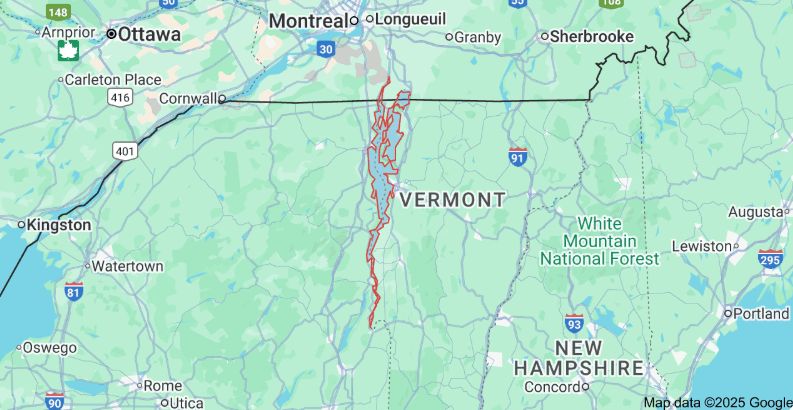
Lake Champlain
Bordering NY and
Vermont |
- In October 1775, his makeshift fleet clashed with 25 British vessels on Lake Champlain at the Battle of Valcour Island.
- He suffered heavy losses but he delayed the British long enough that they were forced to change their plans and seek winter quarters.
|
Arnold repeatedly demonstrated the inborn capacity to think in broad strategic terms while drawing upon tactical options that would ultimately yield positive results. At times, Arnold seemed to be channeling the precepts of the ancient Chinese military thinker Sun Tzu, sometimes rendered Sun Wu, in his classic volume entitled The Art of War. (allthingsliberty.com)
|

Québec City |
- Arnold’s men struggled through the backwoods of Maine and, after much suffering, reached the Plains of Abraham outside the city of Quebec, in mid-November.
- He rounded out the year by
marching some 1,000 men through the state in a
daring attempt to capture Quebec.
- General Richard Montgomery (1738-1775) led a second command that met up with
Arnold and together, both attempted to take the city on the
last day of December 1775, to no avail.
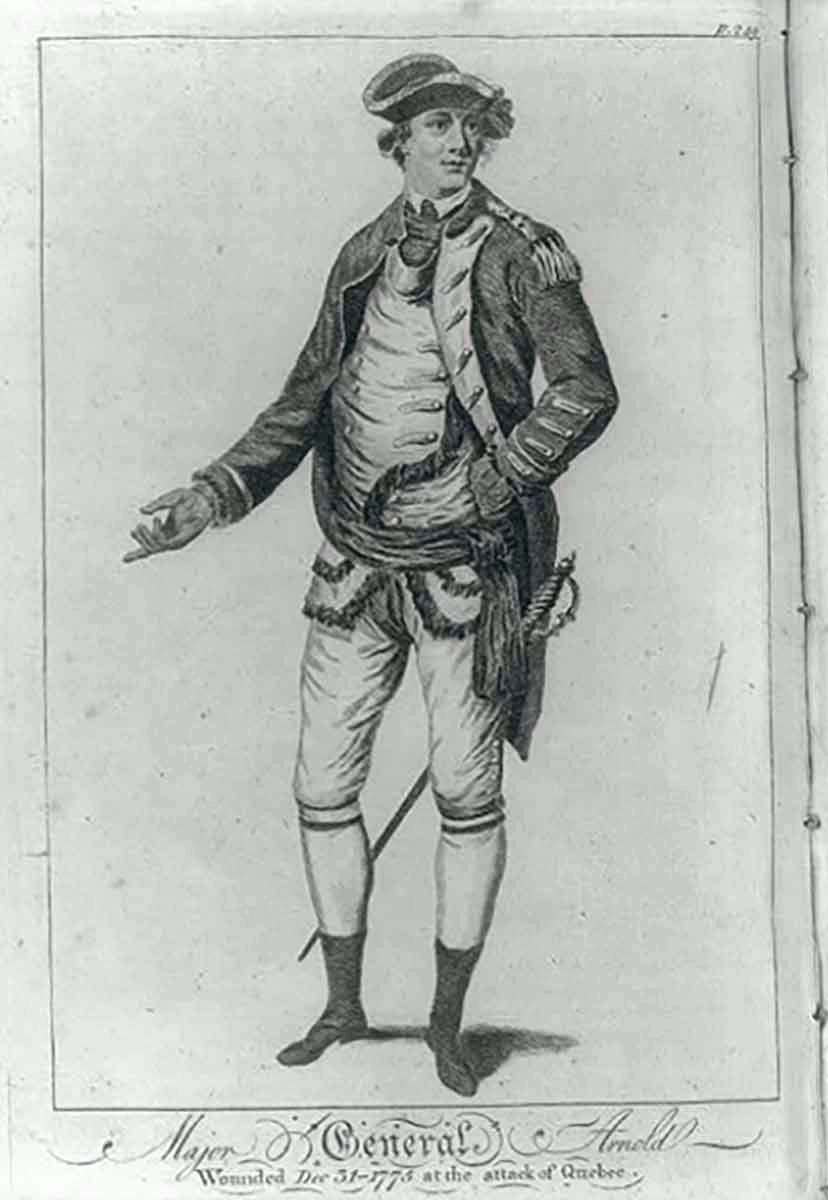
Wounded Dec 31 1775 |
- Montgomery, heading one column, was killed instantly from a cannon blast; Arnold, heading a second, sustained a nasty wound to his left leg that knocked him out of the assault.
- Before the fighting was over, dozens of patriots lay dead or wounded with over 400 taken prisoner by the defending British forces under the command of Governor Guy Carleton.
|
Arnold’s personal stamina and boundless energy during this death-defying trek through the wilderness earned him the epithet “America’s Hannibal” and a brigadier generalship awarded him by Congress. (allthingsliberty.com)
|
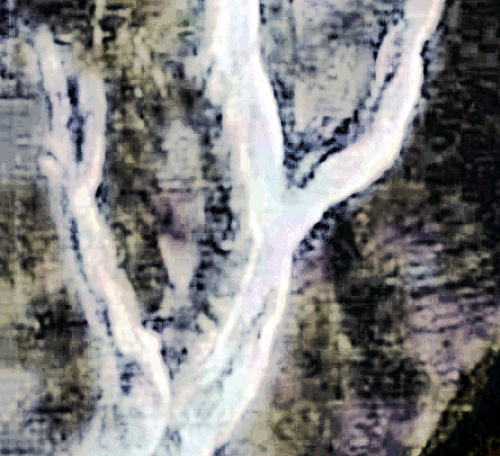
Driven out |
- Despite an effort by Congress to send more troops to Canada, Quebec Province could not be held.
- As British strategy dictated, British and Hessian reinforcements began arriving at Quebec City during May 1776.
- By late June, they had driven the whole of patriot forces, now riddled with smallpox and other diseases, all the way back to Fort Ticonderoga.
-
Arnold next moved to
the Battle of Ridgefield in Connecticut where he was injured in the leg
once again.

Saratoga |
-
After that the Siege
of Fort Stanwix took place followed by the Battles of Saratoga
on September 19, 1777.
-
Arnold was a key figure at the battle where he
was shot in the same leg.
- He played a crucial role in the American victory
that helped secure the French alliance.
- Given his actions at Saratoga leading to the surrender of
General John Burgoyne (Gentleman Johnny) on October 7, 1777, and the resulting Franco-American Alliance.
- Arnold was known for being a superb battlefield tactician and leader
but he had a prickly personality.
|
Arnold’s mixed reputation as both a war hero and traitor was later set in stone at New York’s Saratoga National Historical Park, which features an unusual “Boot Monument” to his twice-wounded leg. While the marker includes a dedication to the “brilliant soldier” who was “desperately wounded” during the Battle of Saratoga, it avoids mentioning Benedict Arnold by name. (history.com)
|
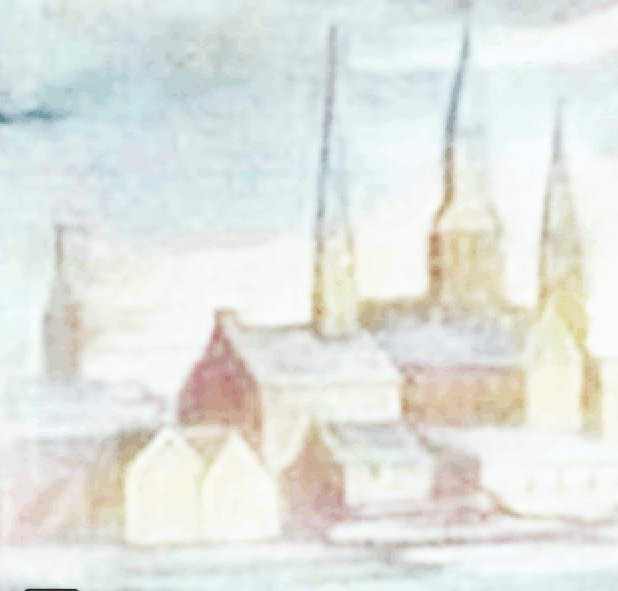
Saratoga story |
- There is a 'tale' about Benedict Arnold at Saratoga
that has been told and retold in literature and film for 200 years.
- Allegedly, after an argument with Arnold, Major General Horatio Gates relieved him from command.
- Benedict, whose sole purpose in life was honor, disobeyed these orders and took to the field.
|
Arnold's arrival sparked the Continental soldiers and America won the day. He received a bullet wound for his actions, as well as the praise of his men. (founderoftheday.com)
|

Snowed under |
-
Arnold was a hero, or was he?
- Yes he was, but the
descrepancy with the story was whether this argument with
Gates actually took place.
- A park ranger and historian at Saratoga National Historical Park,
discovered a letter that indicated that Arnold was actually ordered by Gates to take the field.
- Instead of arguing, turns out, the two had dined together
just before the battle.
|
So the question now becomes...where did this story originate?
Well, it turns out that James Wilkinson (the only man who might compete with Arnold as the biggest villain of the Revolution) wrote a memoir in 1816 which indicated the famous argument may have taken place.
From there, several soldiers retold the story in their pension applications. At the time, to request a pension, veterans had to recount their time in the Continental Army as verification of their service
but the whole story is a myth. (founderoftheday.com)
|

Musket ball |
- His fighting days were over for the short term, as his leg had been shattered by a musket ball
at Saratoga.
- Arnold, along with 1,000 other American, British and German wounded, were sent to the military hospital in Albany.
- Arnold was not a
'good patient,' surgeons wanted to amputate his leg to save his life
and he refused.
- Contemporary descriptions from hospital doctors describe him as petulant and peevish.
- Finally in January 1778, he was sufficiently recuperated to be able to sit up in bed and write letters.
- He remained in the hospital until late February or early March,
a total of 5 months.
|
Those 5 months gave Arnold time to think. From his hospital bed he learned that most of the credit for the victory at Saratoga was going to “Granny” Gates, notorious for his excellent organizational skills, but thought by many to be a man of little personal courage and deficient in battlefield tactical skills. (albanymuskrat)
|
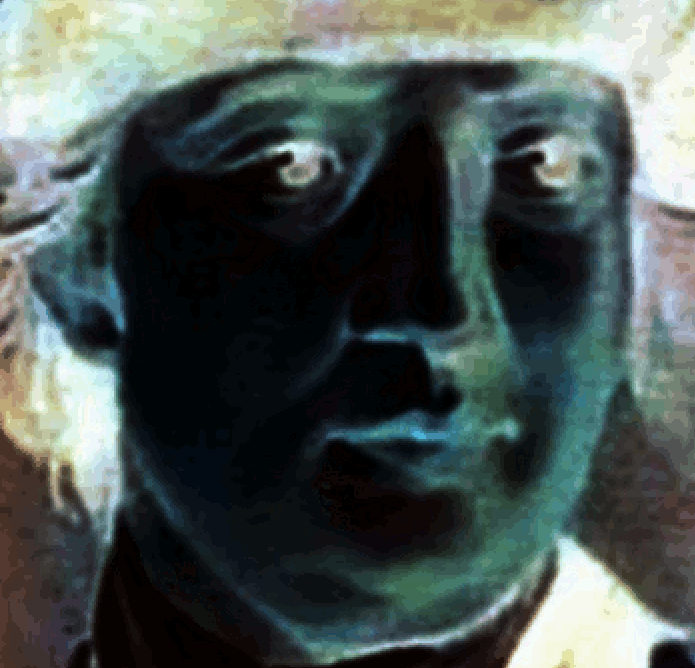
Invisible |
- Arnold repeatedly claimed that he was being passed over for promotion by the Second Continental Congress, and that other officers were being given credit for some of his accomplishments.
- Six Junior Officers had been promoted ahead of him, Benjamin Lincoln, Thomas Mifflin, Arthur St. Clair, William Alexander, Lord Stirling, and Adam Stephen.
- In the spring of 1777, Arnold was able to pay a visit home to his sister and his sons in New Haven, Connecticut.
- He intended to go to Philadelphia to protest his lack of promotion to Congress.
|
Even the shadow of a fault tarnishes the luster of
our achievements, I reprimand you for having forgotten
that, in proportion as you rendered yourself
formidable to our enemies, you should have been
guarded and temperate in your deportment to your
fellow citizens. (George Washington letter to
Arnold)
|

Permanent limp |
- Arnold was shot a second time, through the left thigh while leading a
pivotal charge at 1777’s Battle of Saratoga.
- During one of the last attacks, Arnold was shot in the leg and fell, pinned beneath his horse.
-
The two leg injuries left him with a permanent limp and one leg that was
2 inches shorter than the other, but they also cemented his reputation as a courageous field commander.
-
His perceived lack of recognition and desire for compensation for his efforts, both in Quebec and later at Saratoga, weighed on him heavily.
|
Nathanael Greene found no hint of Lucifer in Arnold when he described him in late 1776 as “a fine spirited fellow, and active general.” Nor did Washington foresee problems when he wrote in 1777 that “surely a more active, a more spirited, and sensible officer, fills no department” of the Continental army. (allthingsliberty.com)
|

Scorched |
- Just a couple of months before his treachery, he had been
court-martialed, and narrowly avoided conviction, which led to
him falling out of favor with Washington, who respected him
enough to give him a slap on the wrist.
-
The truth is, at the outset of the Revolutionary War in April 1775,
Arnold was at best a military novice, a true amateur in arms.
- Yet within two years, Arnold had emerged as one of George Washington’s most invaluable generals.
|
Some in his military and political circles charged him with corruption. After formal inquiries, he was acquitted of all but two minor charges, but Congress investigated his finances and determined that he was indebted to Congress and that he had borrowed money heavily to maintain a lavish lifestyle. (Wikipedia)
|

British alliance |
- By 1779, Arnold was hanging out with British Loyalists in his
private life.
- He married into the Loyalist family of
Margaret 'Peggy'
Shippen, the 18-year-old daughter of Judge Edward Shippen IV, who had done business with the British while they occupied the city.
- She was a close friend of British Major John André and kept in contact with him when he became head of the British espionage system in New York.
|
Arnold had been badly wounded twice in battle and had lost his business in Connecticut, which made him profoundly bitter. He grew resentful of several rival and younger generals who had been promoted ahead of him and given honors which he thought he deserved. Especially galling was a long feud with the civil authorities in Philadelphia, which led to his court-martial. He was also convicted of two minor charges of using his authority to make a profit. (Wikipedia)
|
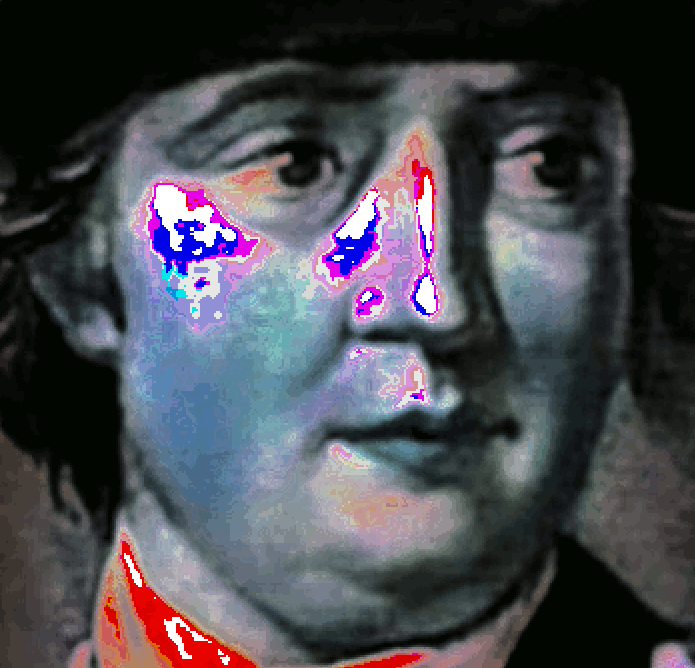
Arnold switches |
-Many historians see his wife Peggy as having facilitated Arnold's plans to switch sides.
- In May 1779, Arnold secretly contacted British General Henry Clinton to discuss the possibility of switching his allegiance back to the Crown.
- Arnold opened secret negotiations with André and his wife
relayed their messages.
- It is clear from Sir Henry Clinton’s papers, opened to scholars
since the 1980s, that Peggy was aware of her husband’s treasonous negotiations from the beginning and to some extent was involved in them.
|
Before the honeymoon was over, Arnold had offered his services to Sir Henry Clinton, the British commander in chief in America, thus initiating the conspiracy that a year and a half later would take him and Peggy to West Point and catastrophe.Only hearsay supports the story of her confession to an acquaintance that it was she who had persuaded her husband to betray his country, but such an action would have been in keeping with her character and background. (americanheritage.com)
|
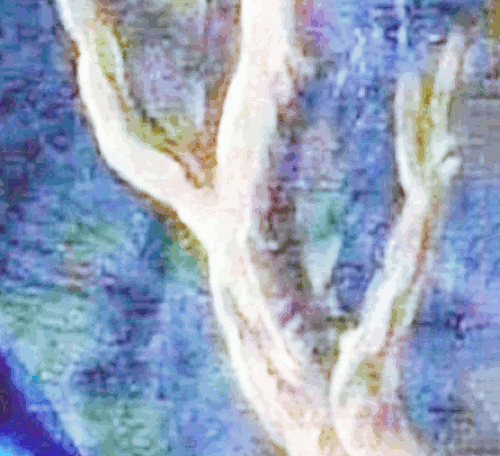
West Point |
-
He was passed over for promotion by the Continental Congress several times and accused of corruption and malfeasance by fellow officer.
- He finally submitted his resignation which was refused by Washington, who then dispatched him to upstate New York.
- General George Washington had given Arnold his fullest trust and had placed him in command of
the fort at West Point in New York
in July 1780.

George Engleheart, CC0, via Wikimedia Commons
Major John André
Spy Story Along the Hudson |
- Major John André, 29 years old, was then Deputy Adjutant General to Sir Henry Clinton, Commander of British land forces in America south of Canada, and headed Clinton's cloak‐and‐dagger operations.
- From his New York headquarters, André had been corresponding. since June, 1779, through a series et coded letters, with a general office of the Continental Army who signed himself
'Gustavus' which was Benedict Arnold's alias.
- Now the two were to keep a clandestine midnight rendezvous.

Surrender West Point |
- Little did Washington knnow that Arnold began using coded letters and invisible ink to send reports
on Continental troop movements and supplies, and later
conspired to hand the American bastion at West Point over to
the enemy.
- Arnold’s move from hero to turncoat culminated in September 1780, when he secretly met with British Major John
André to finalize plans for the surrender of West Point.
|
He was 36, a widower with 3 sons. He was a man of action and a natural warrior whose fighting career was over. He had thrown himself into the War and his business had suffered. A doctor who treated him after his initial leg wound in Canada less than two years before noted that Arnold, while in the Albany military hospital, seemed to be a different man. (Julie O’Connor)
|
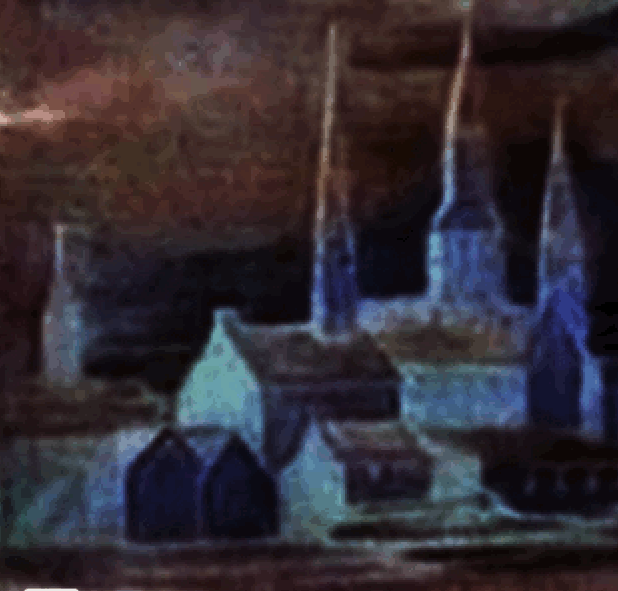
Snuck out |
- Arnold was a traitor and was planning to surrender the
fort to British forces, however, the plot was discovered in
September 1780.
- American militiamen captured André carrying papers
stuffed in his boot which revealed the plot.
-
Arnold caught wind of the capture just in time to flee his command and escape aboard the British ship
HMS Vulture.
- He returned his allegiance to the British empire on September 25, 1780.
- He escaped and fled to the British line, and André was
charged as a spy and hanged in October 1780.
|
Arnold’s defection made him into an instant villain in the United States. Residents of Philadelphia paraded a two-faced effigy of him down the streets, newspapers compared him to Lucifer and Judas, and the Continental Congress passed a resolution permanently erasing him from the army register. (history.com)
|

Hugger‐mugger on the
rocks |
- For a few days in 1780, the fate of the nation hung in the balance in what are now New York City's upstate bedroom communities.
- And today this tale of hugger‐mugger on the Hudson can be followed step by step along a trail through Westchester, Putnam and Rockland Counties.
- Begin at the foot of Long Clove Mountain on the west bank of the Hudson just south of Haverstraw.
- At the water's edge there is a haphazard tumble of rocks jutting out into the water; it was once a dock.
- An inscription on one of the boulders explains: “André the Spy landed here September 21, 1780.”
|
An English Connection in Haverstraw. . . . A Spy Unmasked in Tarrytown . . . . A Public Hanging in Tappan! (New
York Times)
|
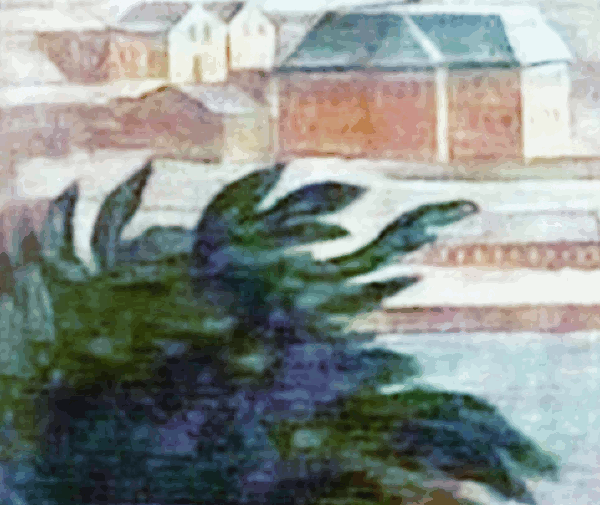
Enemy lines |
- George Washington launched a mission for an Army
sergeant major to capture Arnold from behind enemy lines by
posing as a turncoat and cozying up to Arnold in New York City
where the British hung out.
- Arnold would then be led to
New Jersey where Washington planned to 'make a public example
of him' and the scheme almost worked, except Arnold was called
on a campaign against the southern colonies.
|
Greed and personal debts were certainly a motivating factor in Arnold’s treachery—he demanded 20,000 British pounds for turning his coat—but he had also become disillusioned with the revolutionary cause.The British promised £20,000 (equivalent to £3,353,000 in 2023) for the capture of West Point, a major American stronghold. (history.com)
|
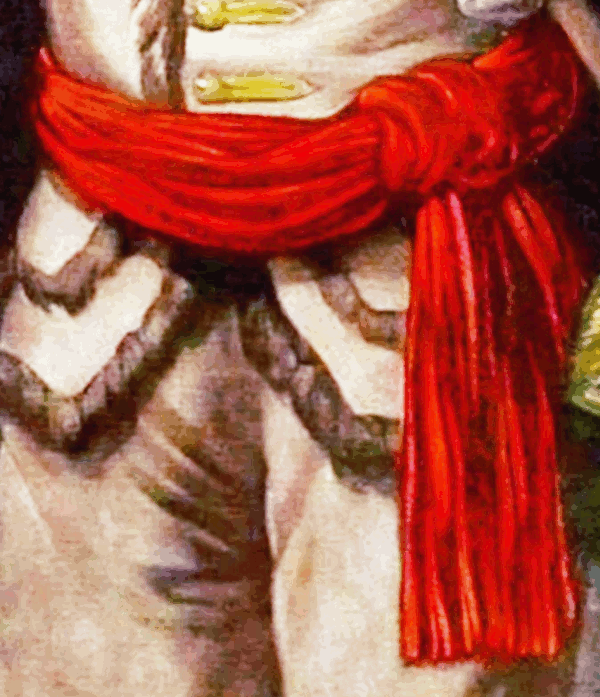
Pajamas |
- Some believe that Peggy realized that if the General aided the British substantially, he would be well rewarded
and that a grateful king might even give him a title.
-Then some day, after years of gracious living in England, she could return to Philadelphia to be deferred to by her friends as
'Lady Arnold.'
|
It was the collapse of these dreams that sent her into apparent hysterics on September 25, 1780, when word reached West Point that the treason conspiracy had been discovered, and her frantic husband made his last-minute escape, leaving Peggy and her six-month-old son to the kind mercies of George Washington and his aides. (americanheritage.com)
|

Philadelphia |
- Washington gave Peggy a choice; she could join her husband in British-held New York or her family in Philadelphia.
- She chose Philadelphia, but the local authorities refused to let her stay.
- By November 1780, she and her baby were in New York, living with Arnold in a fine house he had leased next door to British headquarters at Broadway and Wall Street.
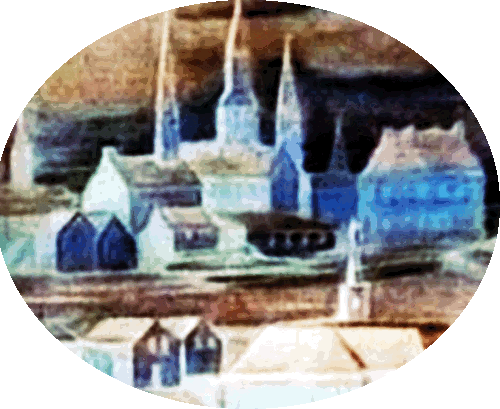
Manhattan 1780 |
- It was wriiten in Manhattan that Peggy was "not so much admired here for her
beauty as one might have expected, she has great sweetness in her
countenance, but wants animation.”
- A statement which suggests that
she was profoundly shaken by the miscarriage of her husband’s treason and the blow to her once high hopes.
|
In a later letter Mrs. Shoemaker announced that at a headquarters ball Peggy had “appeared a star of the first magnitude, and had every attention paid her as if she had been
Lady Clinton. Is not this fine encouragement for generals to follow Arnold’s example?” (americanheritage.com)
|
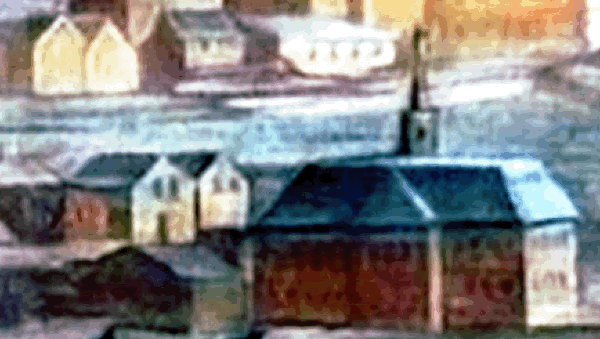
New London |
-
After donning a British uniform, Arnold spent 1781 leading raids against Richmond, Virginia and New London, Connecticut, both of which were sacked and burned.
- Arnold led British forces in battle against the army which
he had once commanded in a raid against Richmond.
- His second expedition took him to New London and Groton, Connecticut, only a few miles down the Thames River from his native Norwich.
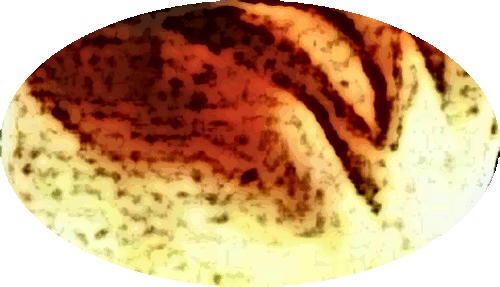
Fire |
- There his attack on two small American forts ended in scenes of horror as his rampaging soldiers, contrary to Arnold’s intentions, according to Sir Henry Clinton, massacred the garrison of one of the forts, murdered its commandant in cold blood, and set fire to New London.
- Clinton was cautious about sending him any farther than New
York City because he was attacked by both sides.
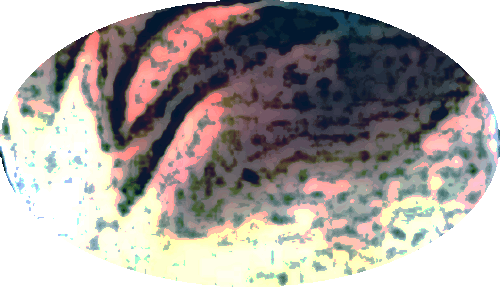
Embers |
- Arnold’s ability to recruit American loyalists to the British forces was far less than they anticipated.
- His name became synonymous with treason and betrayal in the United States.
|
Arnold also commanded British forces at the Battle of Blandford and the Battle of Groton Heights, the latter taking place just a few miles downriver from the town where he had grown up. (Wikipedia)
|

Yorktown |
-
In December 1781, the Arnolds sailed for England separately.
- Peggy and her children, including a second son born in Manhattan, took passage on a private vessel.
- Arnold traveled on the warship Robuste, where one of his companions was his good friend Charles, Earl Cornwallis, free on parole following the defeat of his army at Yorktown.
- Halfway across the Atlantic, a storm struck the 150-ship fleet to which both vessels were attached
and Arnold's ship sprang a leak and he was moved to the
transport ship Edward.
|
Arnold settled in London after the American
Revolution ended, but received a chilly welcome from
his new countrymen, many of whom considered him an
unprincipled mercenary whose actions had led to the
death of the heroic Major Andre. (history.com)
|

Royal garden |
- In 1782, Arnold moved his wife and their 2 children to London and for a few weeks
his name figured prominently in the local press.
- His 3
sons from his first marriage remained in the U.S.
- Once
there, Arnold attended court at St. James’s Palace
and he was introduced to the king.
- It appeared that
Arnold was well-received by King George III and the Tories.
- Peggy was presented to court by Lady Amherst and the king pronounced her “the most beautiful woman he had ever seen,” and the queen instructed her ladies “to pay much attention to her.”
- Reporters spotted Arnold strolling in the public gardens in intimate conversation with his Majesty and the Prince of Wales.
|
From Paris, Benjamin Franklin wrote to America that “we hear much of audiences given to Arnold, and his being present at councils.” (americanheritage.com)
|
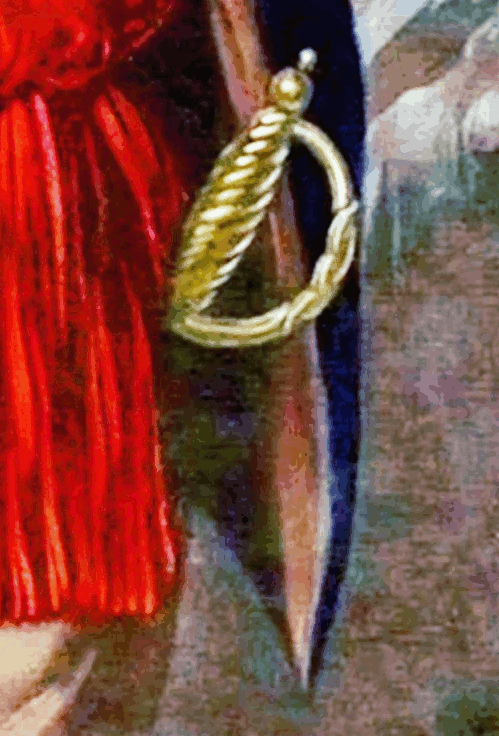
Treason and betrayal
|
- However,
the Whigs and most British Army Officers disliked him.
-
No blaring trumpets had welcomed the fleeing traitor to Great Britain’s American stronghold.
- Arnold and his wife were greeted with hisses when they attended the theater, and he was lambasted in the English press and blocked from taking up positions in the army and the East India Company.
- In the later part of the war, Arnold was commissioned as a brigadier general in the British Army and placed in command of the American Legion.
-
Below the upper echelons at headquarters, however, Arnold’s presence was resented.
|
In the Commons,
a writer expressed the hope that the government would not put the traitor “at the head of a part of a British army” lest “the sentiments of true honor, which every British officer [holds] dearer than life, should be afflicted.” (americanheritage.com)
|
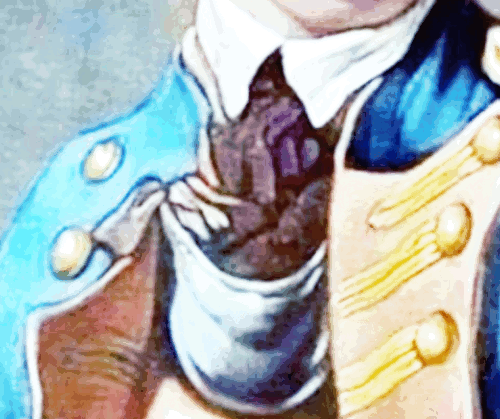
British Army |
-
The Revolutionary War ended in 1783, after which he hoped to be granted an officership in the British Army.
- His candidacy was rejected due to his traitorous past being an insult to duty.
- He moved once again in 1787 to New Brunswick, Canada, where
he ran a merchant business with his sons Richard nnd Henry and
they ventured to buy and sell land for a profit but
failed.
-
Although, he was also extremely unpopular there and returned to
London in 1791.
- Arnold then sailed as a privateer in
the West Indies until 1795, when he retired to London and where he died in 1801.
|
His switching sides for monetary gain and promotion didn't sit well with many in the British officer class, who saw it as less than honourable. At his funeral, he received no military honours from Britain and his grave was lost years ago, his body misplaced in a mass grave due to a clerical error. (enygma9753)
|
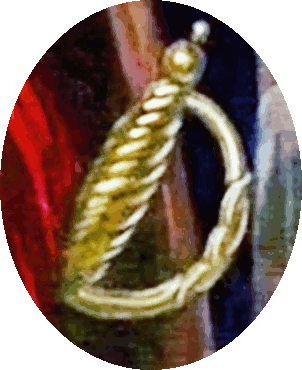
Top officer |
- Benedict was respected and feared by the enemy, and only by feeling disrespected by Washington in his words did he choose to defect.
- In the
end, thankfully Arnold’s betrayal actually had little effect.
- He tried to turn West Point over to the British by providing them with plans and also meant for them to time their attack when Washington was there.
- The idea was for the British to capture a strategically important location in the Hudson River valley and hopefully Washington and some of his top officers with it.
- Had he succeeded, the war would have effectively been over
and the British would have won.
- He fled to New York and joined the British army and was never quite trusted by them.

Churning |
- Arnold’s participation in the early years of the Revolutionary War made him one of our country’s first heroes.
-
Benedict Arnold's reported last words were, "Let me die in the old uniform in which I fought my battles for freedom. May God forgive me for putting on another."
- You have to admit, he was one of the people that got the rebellion going and kept it churning.
|
It was thanks to his successes for our side that the early disasters of George Washington’s campaigns were not fatal to the revolutionary effort as a whole.
(theapprenticechronicles)
|
|
Who was
Benedict Arnold? |
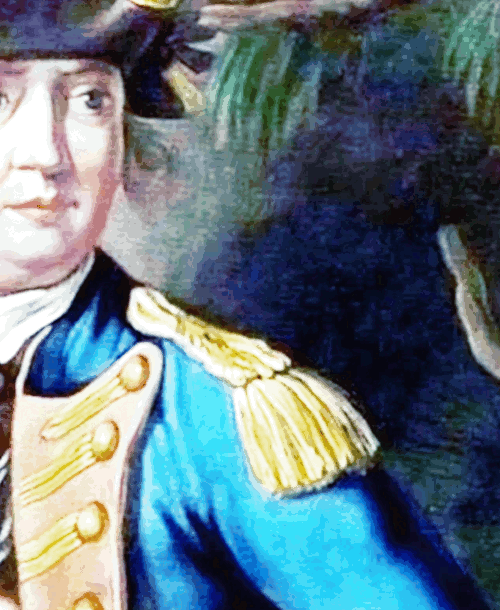
Shape-shifting
portraits
1776 |
- The Thomas Hart engraving of Benedict Arnold is one of a series of six engravings
he created of famous Americans who were in the Revolutionary War,
- This included Esek Hopkins, John Sullivan, David Wooster and Robert Rogers of Roger's Rangers fame.
- All six were issued in London in 1776 by Hart to take advantage of the strong interest in England regarding the American participants.
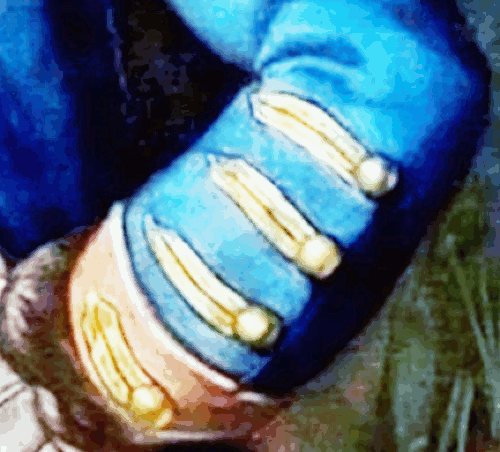
Imaginary |
- An expose of the Hart portraits contained in a 1913 article, referred to this portrait of Arnold as
'imaginary.'
- 'It should not and cannot be used to represent a fair and accurate portrayal of Arnold's features and likeness,'
as the title of the 1913 article indicates, this portrait is a fraud.
- Analysis of the 6 Hart portraits determined that they have many similarities even though they purport to be different people.

Engraving |
- Sounds like the fallen angels were all shape-shifting back
then and they're still running our government today.
- Even though the Hart portraits were shown to be frauds in 1913 they are still being used today to portray Arnold
and have been used in many publications and book covers.
|
Henry Hart has concluded that all of the Hart
portraits are fictitious in an article published in
the Annual Report of the American Historical
Association for the Year 1913. The author analyzes the six Hart portraits and determines that they have many similarities even though they purport to be different people. He says the faces are similar with each possessing protruding lips, protruding eyes and prominent noses. In addition, he finds that each has narrow shoulders with a small but definite paunch. Despite superficial differences, they all have similar postures and uniforms. As a subsequent commentator has observed "Thomas Hart was interested in making some money from the current interest in the American rebellion; the veracity of the portraits mattered little." (varsitytutors.com)
|
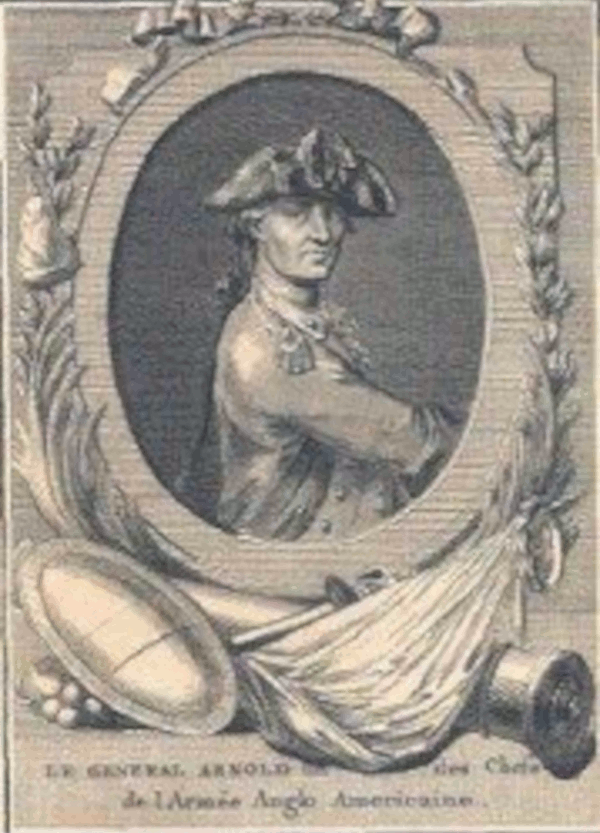
French Arnold
1778 |
- Another unusual portrait of Arnold was produced in France in 1778 entitled
'Le General
Arnold.'
- The print shows the figure of Arnold looking over his shoulder toward the viewer and dressed in French style military uniform.
- The only portrait available of Arnold at that time was
Thomas Hart's, and this portrait looks nothing like it.
-
So obviously it's another imaginary portrait of Arnold.
|
A modern dealer in antique prints describes it as a "lovely and strong print with baroque French embellishments." (varsitytutors.com)
|

General Arnold engraved for Murray’s History of the American War, ca. 1778. (William L. Clements Library.)
|
-
This portrait first appeared in the history of the Revolutionary War written by James Murray.
- The Murray history was published in London in 1780 and in Boston in 1781-82.
- The Arnold portrait is completely different from any other purported portrait of Arnold.
- It looks more like British General Horatio Gates.

The Du Simitiere Portrait of Benedict Arnold
1781 |
- Van Doren in his Secret History of the American Revolution
said that the Du Simitiere portraitt
'is the only likeness of Arnold known to have been made from
life and probably the most lifelike.'
- On the other hand, a 19th-century authority on Revolutionary War portraits says
'The Du Simitiere engravings appear to have been in demand in
England, although by common consent of the collectors of today
they are adjudged poor portraits, even if they were 'taken
from life.'
- Du Simitiere himself described his portraits in his commonplace book, as "...fourteen drawings in black lead, being portraits in profile in the form of a medaillon of eminent Persons engaged in the american war..."
- However, it's still considered the portrait most representative of
Arnold.
|
The Du Simitiere portraits of the famous men of the
Revolution "did much to establish the iconography of
the 'famous men' therein represented" according to the
editor of Chastellux's Travels in America. From their first publishing, the Du Smitiere engravings were said to be made from life and have been accepted by most scholars and experts as being accurate portrayals of their subjects.(varsitytutors.com)
|

Reproduction of a painting by John Trumbull, ca. 1894. Source: Library of Congress
Benedict
Arnold
|
- The Trumbull painting of a portrait of Benedict Arnold was one of over 400 items which were first made known to the public in March of 1896 as part of the Frossard Collection.
- There were a lot of discrepanies noted by the art examiners
about this one, however, it is in wide use.
|
After studying all of the Arnold portraits for this article, I am convinced that whoever actually drew the Frossard Arnold was copying from the Du Simitiere portrait to produce the final result. The similarities are very much there. Even though the uniform is different and the hair is different, it is the same basic portrait. What is being put forward by some as a Trumbull portrait is actually a very clever copy of the Du Simitiere portrait "from life". (varsitytutors.com)
|

Portrait of Brigadier General Benedict Arnold, ca. 1782-1783. Source: Clive Hammond, Museum of the American Revolution, Philadelphia
|
- This portrait is
highlighted in the revised edition of the James Thomas Flexner biography of Arnold published in 1975.
- It depicted Brigadier General Benedict Arnold about 1782 in
the British army.
-
In Flexner's book, a Mrs. Hammond claimed this was from 'real life' and the only
accurate portrayal of Arnold and it came from a family
heirloom.
- Thank you to Varsity Tutors for pointing all this out.
|
The final portrait being examined is found in the revised edition of the James Thomas Flexner biography of Arnold published in 1975.
The portrait appears as the frontispiece of the book.
It is interesting to note that the frontispiece of the
first edition of that biography used the Du Simitiere
portrait of Arnold. The revised edition describes the portrait as follows: "Benedict Arnold as a British general. This practically unknown miniature by an unidentified hand, which has come down from the Arnold family, is the only actual life portrait of the traitor. Courtesy, Mrs. Sophia E. Hammond. (varsitytutors.com)
|
|
Hillary
Clinton as
Benedict Arnold |
Hillary Diane Rodham
1947
10/26 |
Benedict Arnold
1741-1801
1/14 6/14
Two-faced |
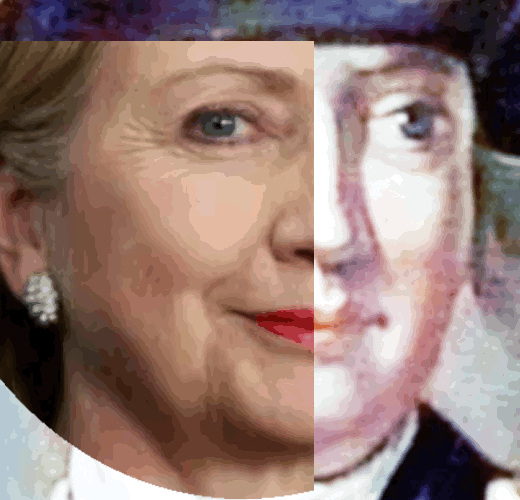 |
 |
|
Wanted for treason |
-
Peggy's father, Judge Edward Shippen, was a Loyalist in the eyes of the Pennsylvania authorities.
- She was the youngest of his five children, a willowy creature with a small, spoiled, eager mouth, fetchingly plump cheeks, and wide, solemn eyes somewhere between hazel and gray.
- Quite a handsome woman with blond hair.
- She had enjoyed the British occupation because of all
the young officers coming to pay their respects and all the
festivities.
- Clear winner in the official portrait
business is Thomas Hart's version of Benedict's wife.
|
Arnold had the power to act, to defy the stresses of business and the dangers of the battlefield; but Peggy had the
power to endure. He could not cope with failure and disgrace. She could—and did. (americanheritage.com)
|
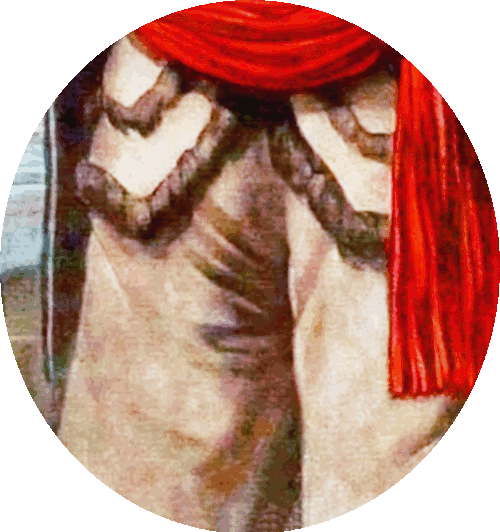
Hillary Clinton's Pajama Party |
- Shape shifting.
- Hillary clinton quote Men's Pajamas.
- Hillary Clinton-Max red 400 Men's Pajamas.
- Merry Xmas Hillary Clinton Pajamas Womens Novelty
for $66.
- Trademarks: One applicant sought unsuccessfully
to register OBAMA PAJAMA another filed two applications for marks that contained HILLARY CLINTON for use on t-shirts again the applications were refused.
- If you like nightmares.
|
By the 1920s, pajamas had fully entered the world of women's style—thanks, in large part, to Coco Chanel. Chanel introduced elegantly tailored silk pajama sets for women. And they weren't only for sleeping—they were just as appropriate for lounging on the Riviera or entertaining at home. (Assistant)
|
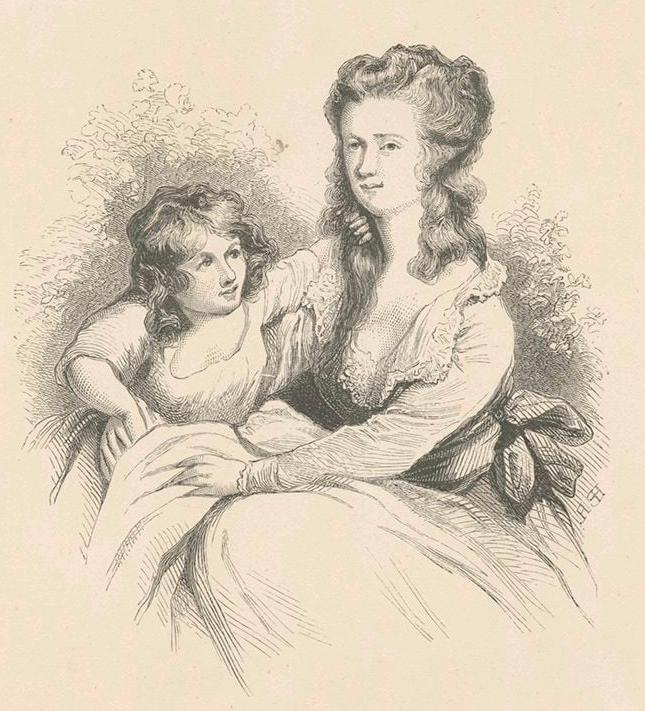
Smithsonian
Peggy Arnold and
daughter (Hillary
lookalike) |
-
House chair questions Clinton adviser's use of Chinese computer
(hey, it was easier for them to get to things).
- A major technology transfer component of the Russian reset overseen
by Hillary Clinton substantially enhanced the Russian military’s
technological capabilities, according to both the FBI and the U.S. Army
(congress.gov).
- Baseless Oklahoma City Bombing
Conspiracy Theory.
- FBI Releases Documents in Hillary Clinton E-Mail ...
- New Batch of Clinton Documents Is Released.
- Newly Declassified DOJ Watchdog Report Shows FBI Cut Corners in Clinton Email Investigation.

Daughter of the
Revolution |
- Why Patents Don't Stop People
Hillary From Stealing Your Invention.
- The Clinton Furniture Flap
(Fact-checking claims the Clintons stole $200k in furniture,
of course she did, we read the curator's report).
- She
even took pieces of furniture that were donations for the White House, not
her.
- Lucas Statement on FBI Investigation of Hillary Clinton.
- Clinton Scandals: A Guide From Whitewater To The Clinton Foundation.
|
The claim that the Clintons were directly involved in the theft of patents is
unsubstantiated by search results and has
not been confirmed
through legal proceedings
or credible journalistic investigations. This is likely
a baseless conspiracy theory or political accusation,
possibly stemming from broader discussions or criticisms of their policies related to intellectual property and international trade. (Assistant)
|
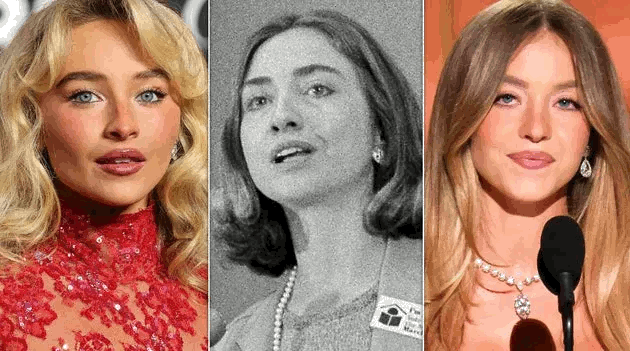
Doppelgängers |
- Hillary Clinton’s Throwback Photos Have People Seeing 2 Very Famous Doppelgängers
(isn't it just amazing that shape shifting demon Hillary looks
just like Sydney Sweeney and Sabrina Carpenter.
- Just wow.
|
Bill
Clinton as
Benedict Arnold |
William Jefferson Clinton
1946
8/19 |
Benedict Arnold
1741-1801
1/14 6/14
Two-faced |
 |
 |
|
42nd president |
- Clear winner in the official portrait
business is the unknown version of Benedict found in James
Thomas Flexner's book.
- “A mean toad eater.” Stated General Nathanael Greene a week after Arnold’s apostasy: “Never since the fall of Lucifer has a fall equaled his.”
- The Clinton’s involvement in Mena, Arkansas, American Made, and Drug Pilot Barry Seal.
- Was Bill Clinton A Drug Smuggler?
- FBI memo reveals drug smuggling at Mena airport in 1980s.
|
Bill
Clinton as
Benedict Arnold |
William Jefferson Clinton
1946
8/19 |
Benedict Arnold
1741-1801
1/14 6/14
Two-faced |
 |
 |
|
42nd president |
- It's a stretch, but it fits, and the Murray portrait could
easily represent Arnold.
- Bill actually has a huge nose
and a protuding jaw.
- Call Clinton Foundation Action What It Was: Corruption.
- Clinton backs violation of Aids drug patents | World news.
-
Clinton’s assistance to China at the expense of American interests did not even end there.
- Ruby Ridge standoff.
- Clinton Defends Agents'
Efforts!!! in Waco Siege.
- Texan Labels Waco Siege Clinton Plot.
- President Clinton was personally involved in the decision to batter and fire tear gas into the cult headquarters
(where 80 died) - Washington Post.
- The FBI's bungled Waco siege gave rise to modern militias.
|
The Republican leader of the Waco hearings, who says the government "killed over 80 people" at the Branch Davidian compound, charged Monday that President Clinton was involved in the decision and appears to be distancing himself from it. (Associated Press)
|
|
Bill
Clinton as
Benedict Arnold |
William Jefferson Clinton
1946
8/19 |
Benedict Arnold
1741-1801
1/14 6/14
Two-faced |
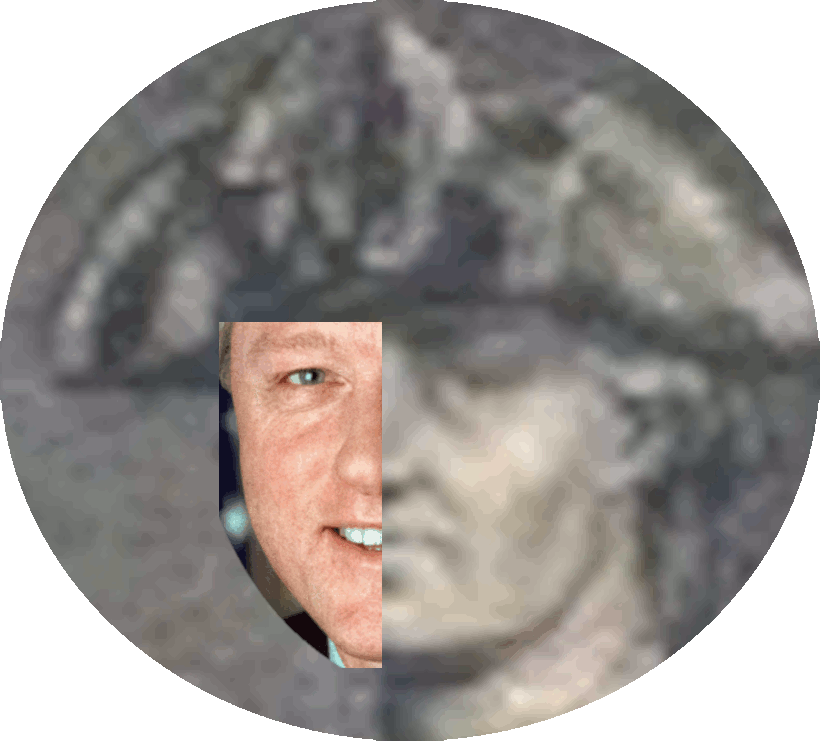 |
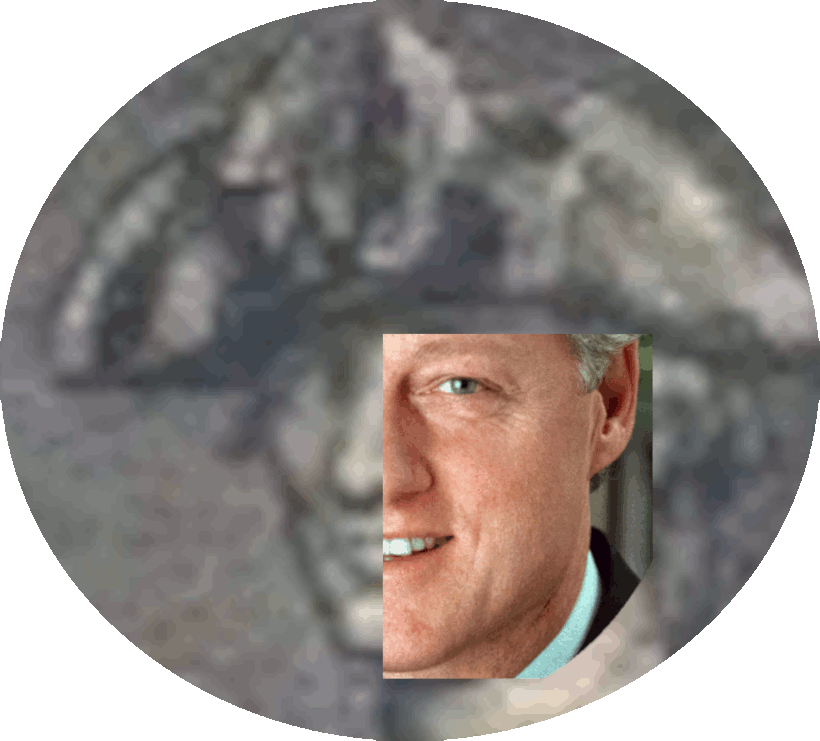 |
|
Wanted for treason |
- The French portrait has a strong resemblence, especially
the nose and chin.
- President Bill Clinton Denies Sexual Affair with a White House Intern
(college student).
- Monica Lewinsky Says Bill Clinton Should’ve Resigned After Affair.
- The Clinton impeachment and its fallout.
- Biden’s OK of Global Theft of America’s Intellectual Property Is Wrong, Dangerous.
- Who Is Chelsea Clinton? USAID Allegedly Paid Millions To Ex-President Clinton's Daughter.
- Why are all the fraudulent leftist fact checking sites
working SO hard trying to deny Chelsea received $84MILLION
from USAID?
- Clinton foundation officials brushed aside questions about use of public monies to supplement staff salaries there.
|
Since he left the White House in 2001, Clinton and his office have received more money through the Former Presidents Act than any other ex-president, according to a POLITICO analysis of budget documents. Multiple sources familiar with Clinton’s funding say the special federal money has supplemented the salaries of some employees of the Bill, Hillary & Chelsea Clinton Foundation, a global nonprofit that has served as Hillary Clinton’s primary platform. (Politico)
|
|
Bill
Clinton as
Edward Shippen |
William Jefferson Clinton
1946
8/19 |
Edward Shippen
1729-1806
2/16 4/15
lawyer |
 |
 |
|
42nd president |
-
|
Bill
Clinton as
Edward Shippen |
William Jefferson Clinton
1946
8/19 |
Edward Shippen
1729-1806
2/16 4/15
lawyer |
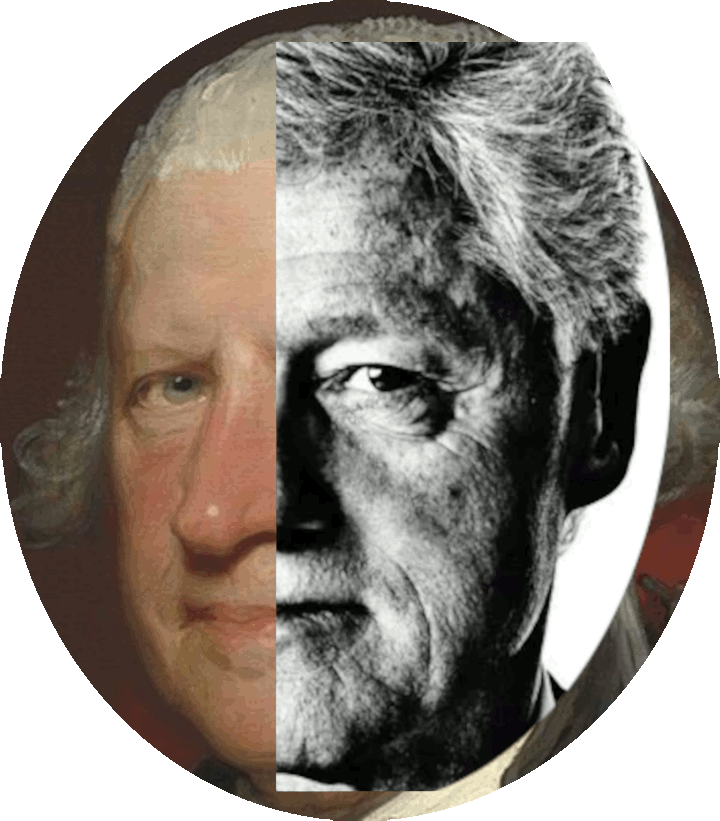 |
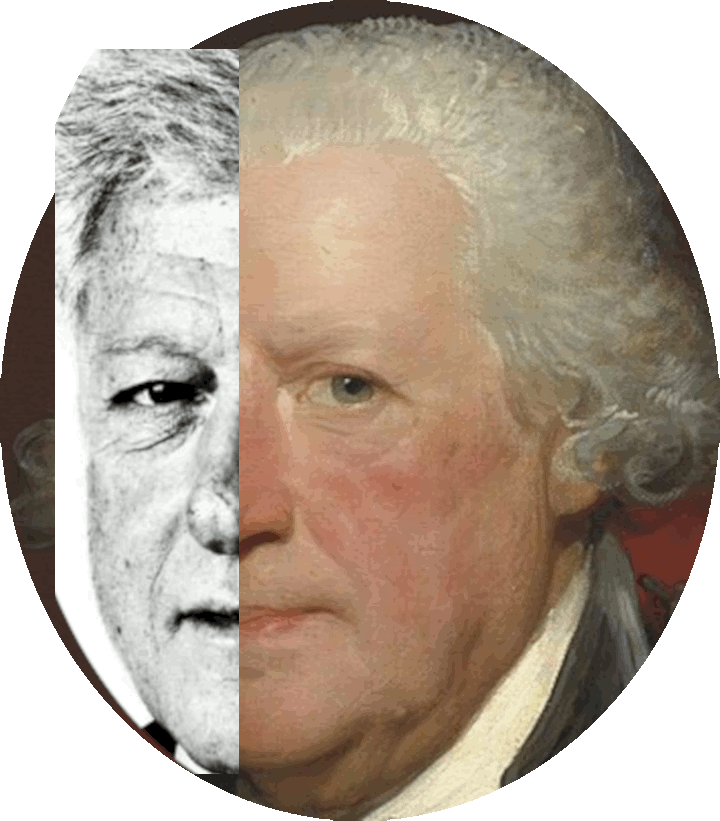 |
|
42nd president |
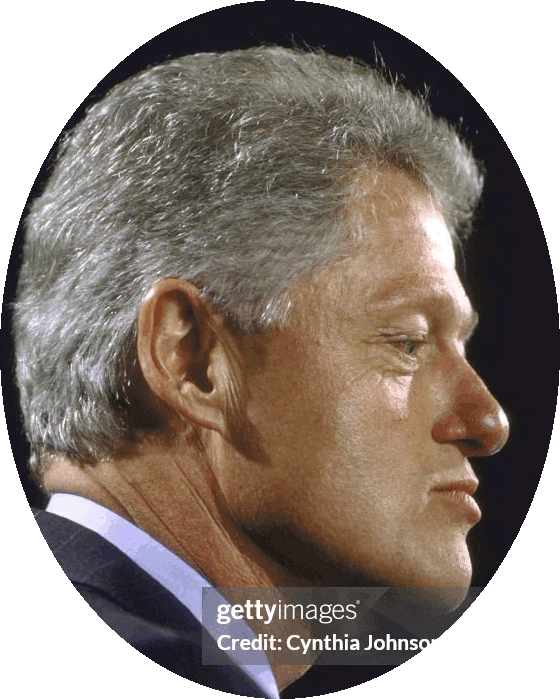
Habsburg |
- Chief Justice Edward Shippen of Pennysylvania was Peggy
Shippen Arnold's father.
|
I am the mother of my father,
and the sister of my husband,
and he is my offspring. (Song of Eve, Thunder)
|
|
Chelsea
Clinton as
Anne Marie de Orléans |
Chelsea Victoria Clinton
1980
2/27 |
Anne Marie de Orléans
1669-1728
8/27 8/26
Queen of Sardinia |
 |
 |
|
Habsburg |
-
|
General
Thomas Gage as Ethan
Allen |
General Thomas Gage
1718/9-1787
3/10
4/2
British |
Ethan Allen
1738-1789
1/21
2/12
American poser
|
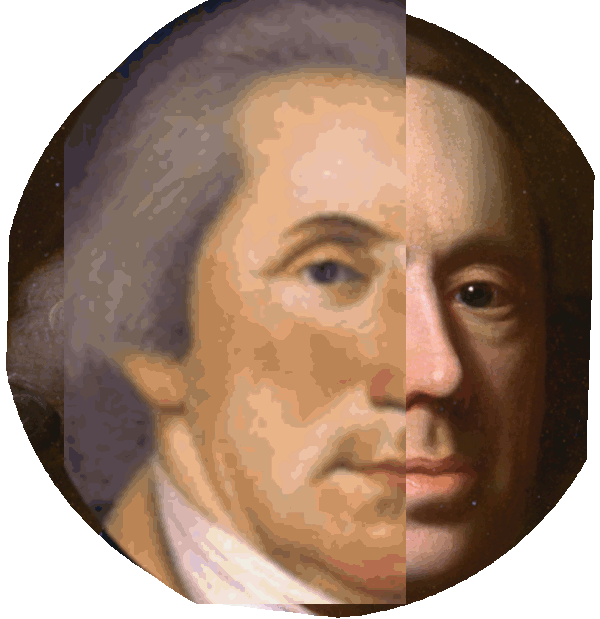 |
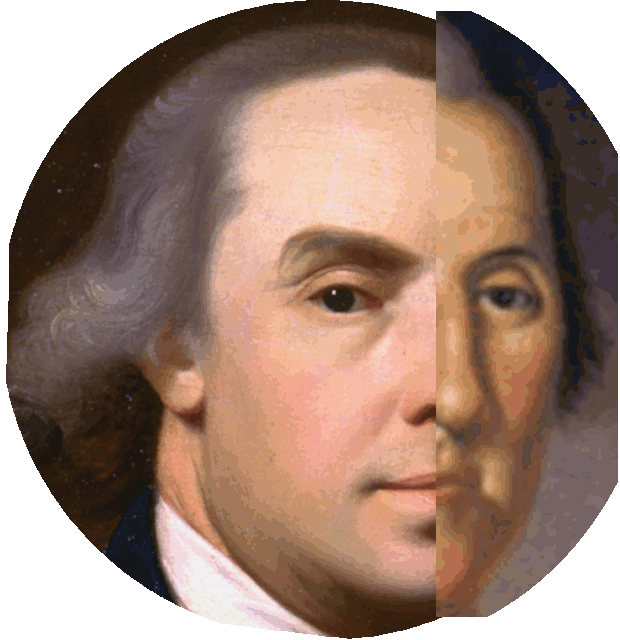 |
|
Overpriced furniture |
- Ethan Allen another turncoat.
|
Hillary
Clinton as
Major John André |
Hillary Diane Rodham
1947
10/26 |
Major John André
1750-1780
5/2 10/2
Two-faced |
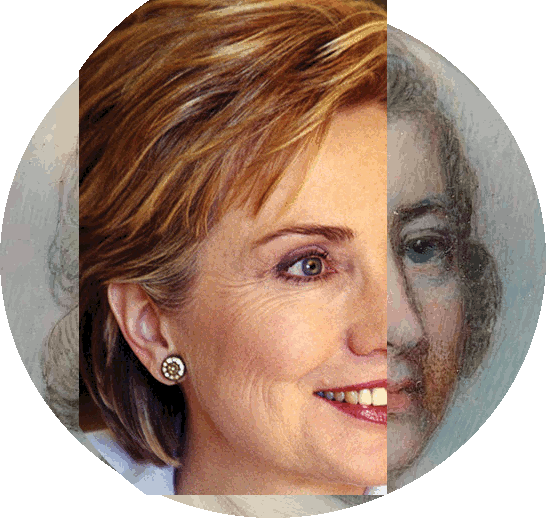 |
 |
|
Double indemnity |
- Major John André was a British Army officer who served as the head of Britain's intelligence operations during the American War for Independence.
- André was born on May 2, 1750, in London, England, to wealthy Huguenot parents who had immigrated there from Continental Europe.
- 'He' was working with Benedict Arnold to secretly turn over West
Point to the British, in September 1780.
- Executed by hanging on George Washington's orders
on October 2, 1780.
|
His execution led to an outburst of anti-American sentiment in Great Britain, and American painter John Trumbull was imprisoned as a result. André is typically remembered positively by historians, and several prominent leaders of the Patriot cause, including Alexander Hamilton and the Marquis de Lafayette, disagreed with the decision to execute him. (Wikipedia)
|
|
|
Hardly a man is now alive
Who remembers that famous day and year.
Henry Wadsworth Longfellow

|

